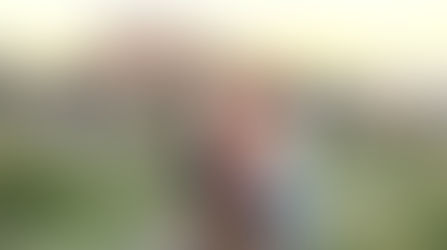3 Tips to do a DIY cake smash session
- Christina
- Aug 11, 2017
- 4 min read
Anyone can do a cake smash session at home.
The quality of the picture depends on:
1. The backdrop and color coordination
2. The lighting
3. The backdrop and color coordination
I don't mind you give me more business, but I want to share with you how to do a simple cake smash setup at home! It's very easy!
#1 Backdrop
We were lucky to have Fun and Coffetti came over and set up this beautiful backdrop. Color coordination is very important, let's make sure the color of the balloons, honeycombs, the cake and the baby's clothing are well coordinated.
#2 Lighting
Lighting is everything in photography. Good lighting contributes 90% to the success of the session. At home, step 1 is to find a spot that receives a lot of natural light. This can be an area near a large window. The glass window acts as a diffuser that cuts off harsh sunlight and turns it to soft lighting. So, always remember windows are your best friend!
As shallows will be formed on the other side of the face of the subject, you would need a reflector or a flash (in a softbox) as the "fill light" that removes the shadow.

The living room that receives a lot of natural light from large windows can be where you plan a session. Remove any objects that can fall between you (the photographer) and the baby, or anything messy that would appear in the photo.

The subjects are facing the window.. A reflector or a flash (inside a softbox) is used on the right hand side as fill light to remove shadow on the side of the subjects' faces.

If there is no diffuser or flash, the face on the other side of the subject will be darker:
#3 Camera Settings
There are 5 settings;
1. Files: Shoot in raw files.
2. White balance: The names of the white balance --- Daylight, Shade, Cloudy, Tungsten etc... are so confusing! It doesn't make sense for a photographer to remember the effect of every single white balance. From now onwards, set your white balance using the Kelvin Scale (K).
When K = 5000K, the color tone of the photo is "neutral" and neither too yellowish or bluish.
When K > 5000K, the color tone of the photo will get warmer or more yellowish.
When K < 5000K, the color tone will get colder or more bluish.
Thus, the white balance of the cake smash session depends on your personal preference. In my situation, the decoration of the house is kind of yellowish and I do not wish my photos to appear too warm. I should not set the white balance above 5000K to make the photos even more yellowish. I set white balance to 4500K with my Canon 5D Mark IV as I intend to neutralize the yellow color in the room and make my photos look whiter or purer.
As I was shooting in raw, I can always change my white balance in post editing with Lightroom or Photoshop.
3. ISO: Start at ISO 800. The higher the ISO, the brighter the image. I always set my ISO before the aperture and shutter speed because the ISO value depends on whether you are indoor or outdoor. In indoor situations, the environment is dark (even you get some natural light from the window) so you need a higher ISO to make the photo brighter. I would start at 800 and then test it. If ISO 800 is still not sufficient to make my photo brighter at a given aperture and shutter speed, I would push it all the way up. Remember, the photo can have a lot of noise when ISO is too high, say ISO 3200. However, since I am using a very good camera, the Canon 5D Mark 4, this problem won't bother me too much unless I go beyond ISO 5000. That's why professional photographers use high end cameras that give better performance at low light conditions.
Another reminder about setting your ISO is, the ISO and the flash have a complicated relationship. You have to test them together to get an ideal value for the ISO and the power of the flash.
4. Aperture: F2.8 or F4. The lower the F number, the wider the aperture and hence the shallower the depth of field. Shallow Depth of Field means less things will be in focus. I just want the baby to be sharp and in focus, while the background is blurred.
5. Shutter Speed: As I am using a Canon 70-200 F2.8 lens, I have to make sure my shutter speed is set at a "safe level" to minimise the chance of blurred photos due to hand shake. The "safe" shutter speed is generally 1/the focal length (hence 1/200s).
Another reason that I set the shutter speed to at least 1/200s is, babies have a lot of movements and I want the photos to be sharp and in focus. Higher shutter speed freezes the movement and gives me sharper photos.
Very important point to note: Most flashes cannot synchronise with the camera shutter when the camera shutter speed is above 1/200s or 1/250s. For Canon users, you have to set the flash to "high-speed sync" when your camera shutter speed is above 1/200s or 1/250s. Do the same to the flash triggers. If you are using a Nikon camera, flash high speed synchronisation is set in the camera, not the flash. If your flash and triggers do not support high speed synchronisation, make sure your camera shutter speed is at most 1/200s or 1/250s.
















































Comments